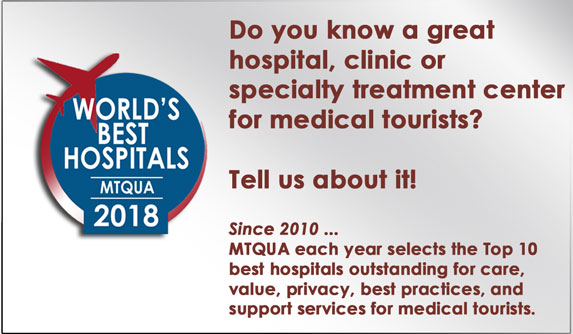 Many hospitals are getting their feet wet for the first time in the marketing arena. But that’s no excuse for poorly designed and maintained websites given how much depends on internet marketing to drive international patients across the thresholds of their hospitals.
Many hospitals are getting their feet wet for the first time in the marketing arena. But that’s no excuse for poorly designed and maintained websites given how much depends on internet marketing to drive international patients across the thresholds of their hospitals.
What basic rules did we find hospital websites breaking? Hospital websites were not the only culprits. We found similar problemsin the websites of clinics, doctors and medical travel facilitators.
Here’s some of what we found.
-
Meta tags missing
Meta tags serve an important function in searches, providing the descriptive text accompanying search results. We found many meta descriptions that were too long and too generic to stand out in search engines.
-
Images need SEO
Each image should be search engine optimized with descriptive labels not numbers or abbreviations. Alt tags provide additional reference for search but are most useful when sites are slow to load. Make it easier for search engines to find you.
-
Few inbound and outbound links or internal links.
Why are more hospitals not linking to their facilitators, insurers and other partners? In turn, those links will spread to other related links, to second and third degree linkages.
-
Broken links
Broken links, both 404 and 301 redirects, need to be fixed and pages created to inform users of redirection.
-
No validation
Websites must be validated for non-www domain name usage.
-
Expiring domain names
Search engines make note of this in their evaluation of websites. Presumably hospitals expect to be around for 10 or 20 more years or longer. Why have they not purchased 99-year domain names?
-
Poorly organized
Most hospital sites are poorly planned, with poor navigation, unclear target audiences. We often can’t locate a page we came across in an earlier session on the site. A site map might help.
-
No social networking
Social networking (blogs, twitter, you tube, etc.) is virtually non existent. Yes, it’s a new field, and I hope hospitals are thinking and planning a smart approach to entering this marketing arena.
-
Readability
Not being easy to read is perhaps the worst crime hospitals are perpetrating on us via their websites. Given the target audience – presumably the local patient and the medical tourist – why is it that nearly all of these sites have a readability index equivalent to graduate school. Are most patients graduate degree candidates?
Providing intelligent, informed content in a clearly written, accessible way is not difficult but it takes commitment and deliberation of the hospital’s management. The New York Times, Time Magazine, Newsweek and many others successfully provide this sort of writing day after day yet it’s written so that a 10th grader can understand it.
I’m following the Greece monetary crisis and reading deep economic analysis, yet it is written with few “big” words. If PhD economists can write for the “masses”, why can’t hospitals?
Check your website for free
How many of these rules is your website breaking? An excellent free evaluation tool will analyze your site and compare it to competitors’ sites. Use this information to fix your site. No excuses.
Related articles

 >
>
Pingback: How sticky is your hospital or medical tourism website? · MTQUA | Medical tourism quality, safety and patient care best practice.
Pingback: When the hospital is the patient · MTQUA | Medical tourism quality, safety and patient care best practice.